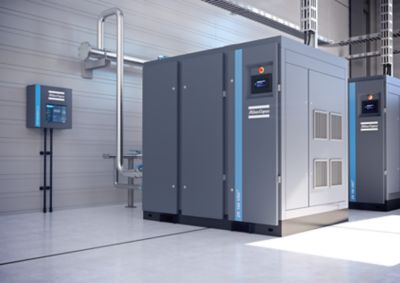Why nitrogen is essential for PCB assembly
Whether you're using reflow, wave, or selective soldering for printed circuit board (PCB) manufacturing, you'll need readily available nitrogen (N2). This is because of its low oxide properties, which helps solder flow. It also generates low heat and produces minimal dross. These benefits for PCB assembly, among others, are covered below.
Before getting into N2 for PCB assembly, it's also worth discussing why PCBs are so important. They're an essential part of the electronic manufacturing services (EMS) market. EMS companies produce PCBs and total products containing PCBs on behalf of original equipment manufacturers (OEMs). You can learn more about this in our related article on the EMS market.
Read on to learn more about why N2 is essential for PCB assembly, starting with a brief introduction on the soldering process. We also cover on-site nitrogen generation.
Soldering processes
The right soldering process will depend on whether through-hole technology (THT) or surface mount technology (SMT) is used. As you might imagine, THT involves holes to secure components, while SMT uses a specific type of adhesive known as SMT glue (or red glue), especially during wave soldering or double-sided reflow soldering. This type of adhesive helps to hold components in place before the soldering process, preventing them from moving or falling off.
Wave and selective soldering are used for THT, while reflow is implemented on PCBs with SMT. This is because wave and selective soldering pass over the solder. On the other hand, reflow soldering involves a paste that is later hardened in an oven around 250 C.
It's also worth pointing out that wave is more commonly used due to its economical approach. Regardless of the type used, you'll want readily available N2 for soldering. This is explained in the following section.
N2 benefits for PCB assembly
The reason N2 is used in PCB manufacturing is due to its inert properties. If compressed air would be used, the solder would react to the oxygen in it, causing an oxide layer to form. This would create short circuits and quality problems and can lead to corrosion.
With that, it's important to have the right flow. You'll want to size your N2 generator according to specifications, based on the soldering type. For example, reflow requires a higher flow than selective.
In addition to what's already been said, there are other benefits to N2:
Generate your own N2 supply for high quality PCB assembly
It's common for EMS companies to receive N2 through delivery services. That said, it's more cost-effective to use on-site nitrogen generation. This is because generating your own supply avoids the need for delivery logistics and associated costs. Additionally, you’ll reduce transport emissions. It also allows you to maintain quality consistency.
Producing nitrogen typically requires an air compressor, nitrogen generator, air treatment equipment like dryers and filters, as well as air and N2 storage. When it comes to dryers and filters, the ones needed depend on the application.
For small to medium sized PCB assembly companies, it’s possible to use an oil-injected air compressor with the right air treatment equipment. In addition, using an on-site generator with Pressure Swing Adsorption (PSA) technology will produce the high-purity N2 that soldering requires.
We're here to help
We hope this article explains the importance of N2 for PCB assembly. If you'd like more information about any topic discussed, feel free to reach out. Our team is happy to point you in the right direction, including our on-site nitrogen generation solutions.
Do you want to learn more about nitrogen generation?
Read more about nitrogen generation on our eBook:

